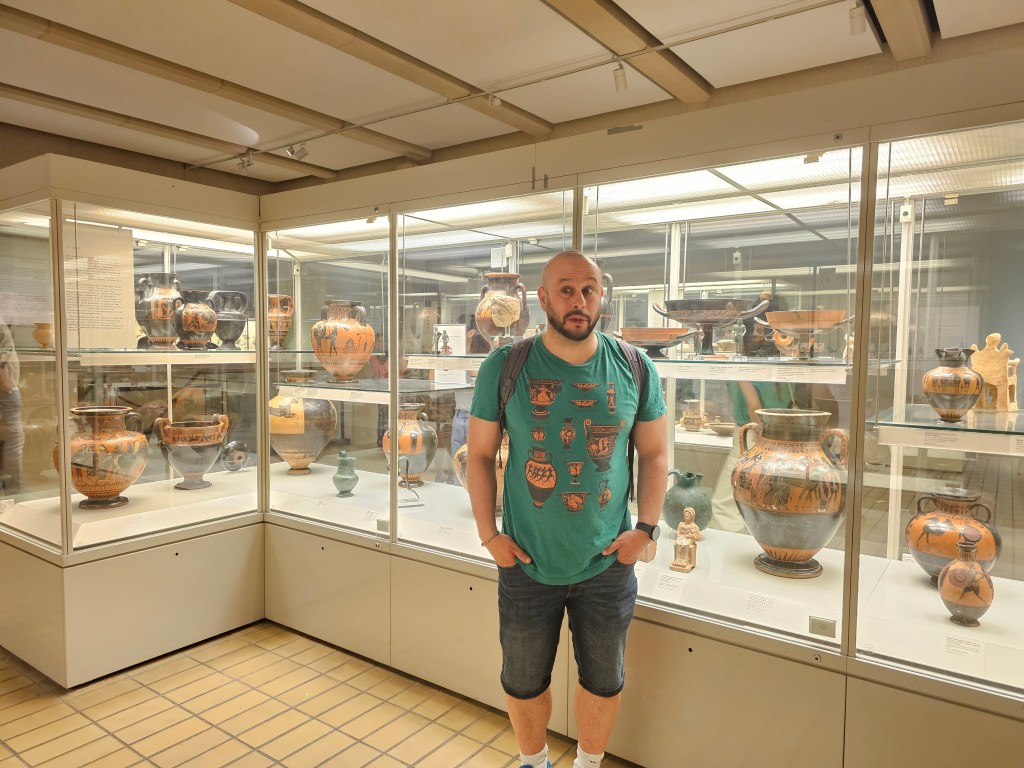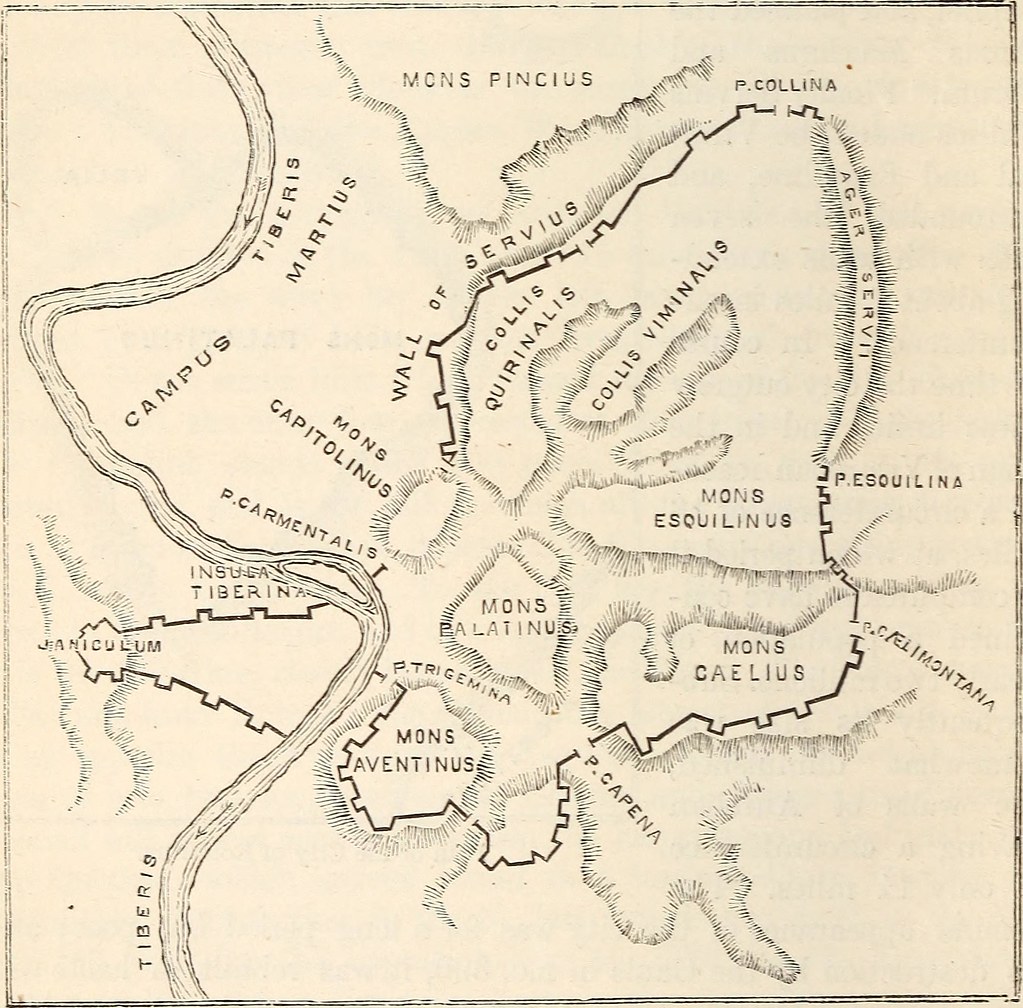Exploring Place in Regal Rome with Neil, The Ancient Blogger - Part 1
Description
We are thrilled to sit down with Neil, The Ancient Blogger and host of the Ancient History Hound podcast to explore space and place in the Roman regal period.
Neil, or ancientblogger as he’s more commonly known, studied ancient history at degree level and then completed an MA in Classical Civilisation. Though he has a full time job he spends most of his time creating content on Instagram, X, YouTube and TikTok – just search for ancientblogger. He also has a website ancientblogger.com and several years ago started what is now the Ancient History Hound podcast, where he covers a wide array of topics from ancient history.
He also gets the chance to volunteer at schools around Brighton where he helps students with Greece and Rome, the latter usually whilst wearing his legionary armour. As his website states – he’s all about ancient history and passionate about making the topic accessible to one and all.”
<figure class="wp-block-audio"></figure>
Special Episode – Exploring Place in Regal Rome with Neil, The Ancient Blogger – Part 1
<figure class="aligncenter size-large">
 </figure>
</figure>Neil seems to have found himself in a museum of ancient vases while wearing a tshirt of ancient vases!
What was the landscape of regal Rome like?
There’s no doubt that the topography of ancient Rome was very different to what we are able to see today. With the restraints around archaeological work you can expect in a city that is still as important and vibrant as the capital of Italy, it is partly through evidence on the ground and partly through reading the ancient sources that we can come to grips with what ancient Rome may have been like in its very early iterations.
The Palatine and the Aventine
Neil takes us through the importance of hills in general, in Italy, and for Rome in particular. Romulus has a connection with the Palatine hill and Remus is connected with the Aventine. Neil delves into the details of the wolves in this area including the development of the Lupercalia rites and the significance attached to blood sacrifice in cultivating the meaning of place.
The early pomerium
How did it the sacred boundary of Rome work? Where was it? What were the implications for trying to cross it with early armies? None of these questions can be answered definitely because evidence is thin on the ground archaeologically speaking, but considering later written sources offers some ways into the topic. Looking to read more on this topic, consider Koortbojian, M. 2020. Crossing the Pomerium: The Boundaries of Political, Religious, and Military Institutions from Caesar to Constantine (Princeton University Press)
The Campus Martius
The campus Martius ‘Field of Mars’ was the site of the potential murder of Romulus, Rome’s first king. The area covers a fair amount of land next to the Tiber and we consider some of its historical details.
The Tarpeian Rock
Bound up with the early defence of Rome is the Capitoline Hill where the earliest defences of the city were thought to have been built. We explore the stories that the Romans told about how the rock got its name. This leads into a consideration of how death was treated in respect to place.
The First Bridge over the Tiber
The Pons Sublicius was the first bridge recorded to cross the Tiber. Not only was the bridge of strategic importance, but it was also connection with rituals. Neil takes us through some of the geographical features of the Tiber and how understanding the ancient river is quite a different proposition to understanding the Tiber as it can be observed today.
The Janiculum and the Caelian
The importance of the Janiculum being on the far side of the Tiber as far as the Romans are concerned and the etymological possibilities for the names of some of the hills. The Caelian hill is often overlooked, but maybe it needs to find its spotlight especially for its connection to Numa, the second king.
Things to listen out for:
- The Oracle at Dodona
- Pallantium in Arcadia (Greece) and Evander
- Zeus Xenia and Lyacon
- The cultural significance of place and the development of the sacred
- The sacrifice of Iphigenia
- The clock face approach to understanding where the ancient hills of Rome were
- Hercules and Cacus the Giant
- Aelius Gellius’ Attic Nights
- Miasma, the Ancient Greek understanding of pollution
- Quintilian on the Tarpeian Rock
- Horatius Cocles
- The brontoscopic calendar of the Etruscans
Sound Credits
Our theme music was composed by Bettina Joy de Guzman.
<figure class="wp-block-image size-full">
 </figure>
</figure>Map of ancient Rome showing the theorised extent of the Servian Walls built by Rome’s sixth king.
The various hills and significant gates (porta) are also indicated. Note that the Janiculum is on the far side of the Tiber from Rome proper. Source Flickr.
Automated Transcript
Automated transcript lightly edited for our wonderful accents and the tricky terms in Latin!
Dr Rad 0:12
Welcome to the Partial Historians.
Dr G 0:15
We explore all the details of ancient Rome.
Dr Rad 0:20
Everything from political scandals to love affairs, the battles waged, and when citizens turn against each other. I’m Dr. Rad.
Dr G 0:30
And I’m Dr. G. We consider Rome as the Romans saw it by reading different ancient authors and comparing their accounts.
Dr Rad 0:41
Join us as we trace the journey of Rome from the founding of the city.
Dr G 1:03
Hello, and welcome to this special episode of the partial historians. I a






